Limestone Preheater and Refractory Products
The heated limestone is pushed across the floor of the preheater by hydraulic rams. The limestone is ultimately dropped through the feed hopper and into the rotary kiln. The range of temperatures in the preheater varies from several hundred degrees. Temperatures range in the gas outlet chamber to the calcining temperature (around 1800°F). This process causes significant abrasive wear and selecting the right refractory is crucial.
Refractories Designed for Preheater
The gas outlet chamber is commonly lined with a fireclay-based castable or gunning mix. EZ Cubed 2700 and Rescocast 15GM are common selections for the working lining. These products provide ease of installation and good abrasion resistance. Calcium silicate block insulation or light-weight gunning mix is in the back-up layer. The back-up layer provides reduced shell temperatures, here and through the entire preheater.
The roof of the preheater is usually suspended brick constructed from 45% alumina fireclay or 60% alumina special shapes. At the fully retracted position of the rams, the brick floor should feature high abrasion and wear resistance. Typically, phosphate-bonded high-alumina brick is preferred, including Seneca 60P, and Alumex P-85-HS for more severe abrasion.
Normal refractory selection for the hopper includes 40% alumina castables and gunning mixes. For outstanding product performance and longevity, R-MAX PC and R-MAX PC-QT are recognized as industry standards for this application.
The transfer chute breaches the preheater rotary kiln. As preheated stone slides down its sloping brick wall and enters the lime rotary kiln. The brick wall requires maximum abrasion resistance, making Alumex P-85-HS the ideal refractory choice. R-MAX PC and R-MAX PC-QT provide installation ease for complex construction as well as optimal abrasion resistance. To help manage process-related build-ups, Vibrocast 60Z PC, EZ Cubed AZS, and QuikTurn AZS-PC are ideal.

